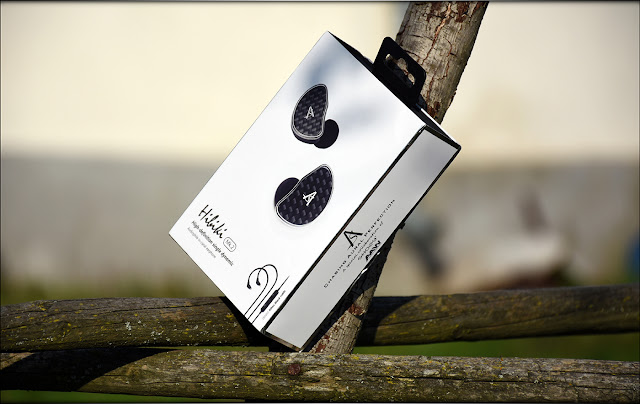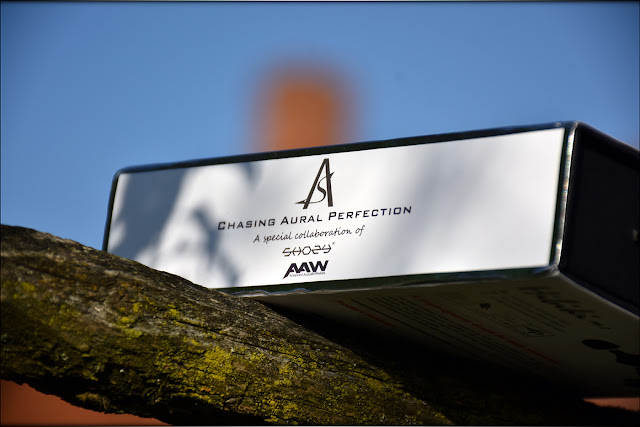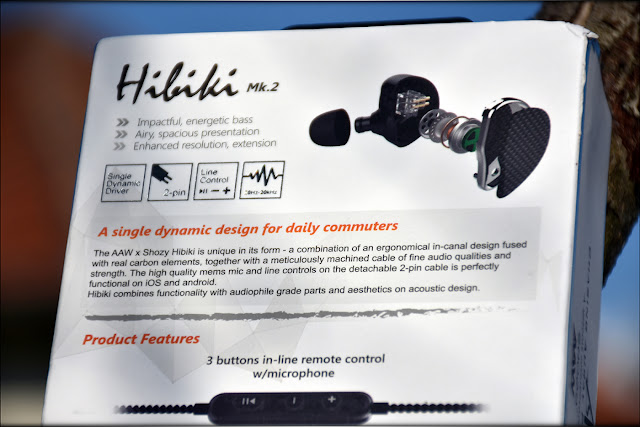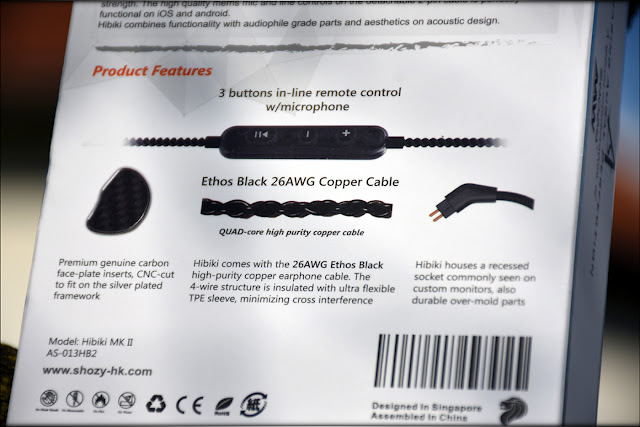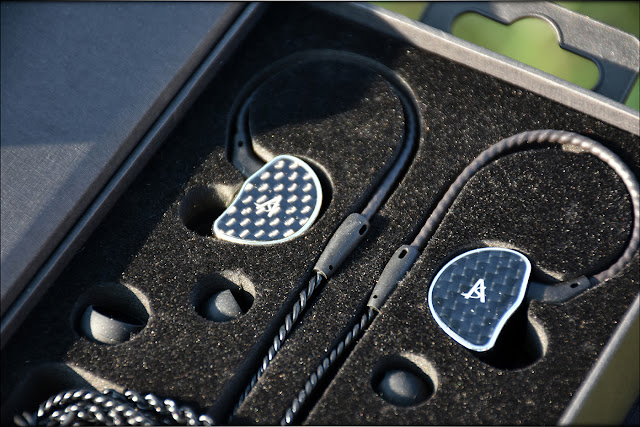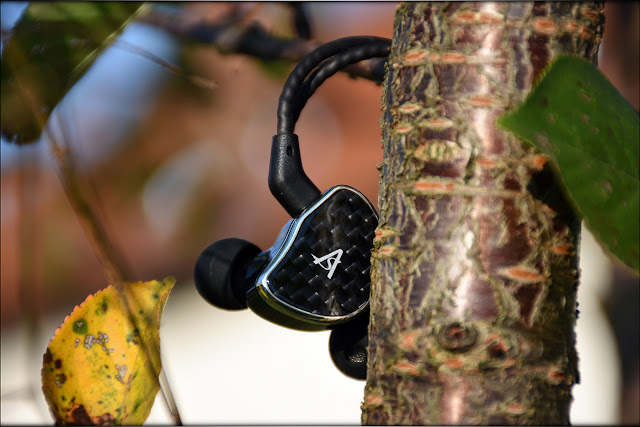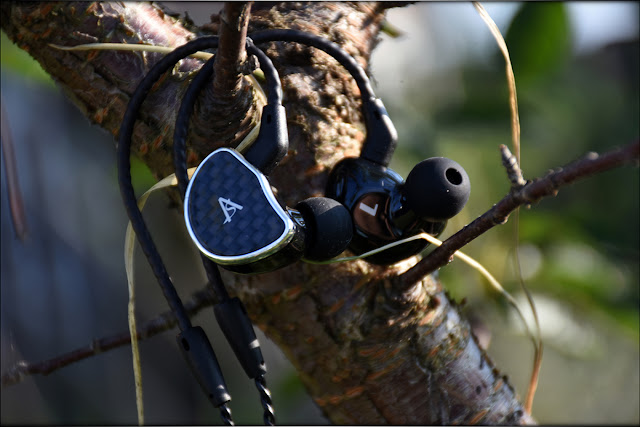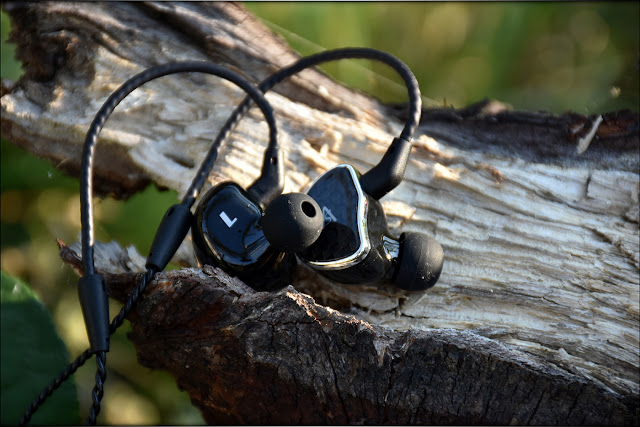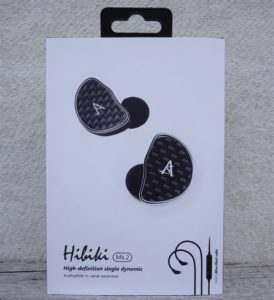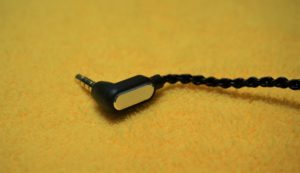AAW-Shozy Hibiki Mk2-Second Gen to the front, please.

Having never personally heard the acclaimed AAW-Shozy Hibiki, I was intrigued when Lillian from DD Audio contacted me regarding a review of the Mk2. From what I quickly read (after saying yes of course), I was impressed by the collaboration, and the review findings. As part of a Head-Fi tour earlier last year, I was lucky enough to listen to the then TOTL AAW, along with a couple of others. I was mightily impressed, and almost pulled the trigger on the AAW W500. Indeed, I liked it a bit more than the flagship W900. Further impression of the A2H Pro, left me with good insights as to the sound AAW wrought from their lineup. Often when there are collaborations, the result is less than the separate companies. This would be a firm case against that, with both sides providing their expertise to a solid entry into the “mid” low-end priced IEM market. Once I found out that this was a true collaborative effort, I was anxious to delve into the Mk2.
The second iteration of the highly acclaimed AAW-Shozy collaboration. Lillian from Linsoul.com provided me the Mk2 free of charge. All they ask in return was a timely honest review. I would have it no other way. The Hibiki Mk2 can be purchased from Linsoul’s AliExpress (
https://goo.gl/cDsFTU) or Amazon (
https://goo.gl/zTSUYB) stores. As of this writing the manufacturers retail price was $65 USD.
From the Linsoul Amazon website:
-Impactful and Energetic Bass
-Airy and Specious Presentation
-Enhanced Resolution, Extension
-Specifications:
10mm Bio Cellulose Membrane Proprietary Full Range Dynamic
Single Sound Bore Design
Frequency response:20Hz-40000Hz
Sensitivity: 102dB SPL@1mW
Impedance: 18Ohm@1KHz
THD≤0.5%@1KHz
Connector: 2-pin 0.78mm
Plug:3.5mm
-What’s In the Box
Shozy Hibiki MK2 In-Canal Earphone
3 Pairs Earplugs (tips)
1 Usual Manual
Comparisons:
Advanced Sound Group GT3
Kinera iDun
TinAudio T2
MacBook Pro through Burson Play/iFi xDSD
Shanling M3s
Opus #2
Questyle QP2R
Aune M1s
Songs used:
Too bloody many to list all, but you want songs, so there you go:
Coldplay-
All I Can think About Is You
Coldplay-
A Message
Coldplay-
White Shadows
Dona Onete-
Sonos de Adolescente
Los Lonely Boys- Heaven (en Espanol)
twenty one pilots-
Trees
twenty one pilots-
Car Radio
twenty one pilots-
Heathens
Damian Marley-
Everybody Wants To Be Somebody
Damian Marley-
So A Child May Follow
Damian Marley-
The Struggle Discontinues
Ziggy Marley-
Lighthouse
Ziggy Marely-
See Dem Fake Leaders
Mark Knopfler-
Laughs And Jokes And Drinks And Smokes
Santana w/ Mana-
Corazon Espinado
Unboxing/Fit-n-Finish:
I always try the included tips first. After all, I would like to think that the manufacturer knows of what they think, therefore include the necessary tips. Most of the time though, I switch to my preferred foam tips (either Comply or my stock of Unique Melody). I simply prefer foam tips. They give me a better seal, and allow for head movement, which does not make the IEM move. Thus, there is no change of position, which can hinder my enjoyment and ciphering of these scribbles. It is just the way my ears work and very few times do silicons work for me. So, please judge my review based upon a solid seal with no movement of IEM within my ear.

Recently I read a review, which espoused the virtues of the unboxing venture when one does a review. I believe he called it similar to the initial impressions a manufacturer would like to make. While I agree, there is another with which I converse often who likes the simplicity of box presentation as he likes to think that the manufacturer thusly provides the majority of funding into the IEM itself. I understand both sides and appreciate both. A company might have two chances in which to impress: the unboxing and of course the sound. It is here that I lie closer to the later audio companion. My desire is a well-presented box, which while nice does not take away from the IEM itself. The
Hibiki Mk.2 falls into that category. A very nice presentation, but one that does not make you think that the money went into a fancy box.
Simple and straightforward, you get a larger than life impression of the AAW-Shozy 2nd iteration on the cover, replete with the familiar Hibiki cursive script. Elegantly simple. The back continues this pursuit of simple elegance complete with simple sayings, picture and close up of the cable and exploded view of the single titanium 10mm dynamic driver of 10Hz to 23,000Hz range. Gold highlighting on all sides of the box accentuate that simple elegance. Think 1960’s modern house, awash with SE Asian artifacts overlooking a fine canyon, mountains in the background. Spectacular in its simple nature. Quiet strength.
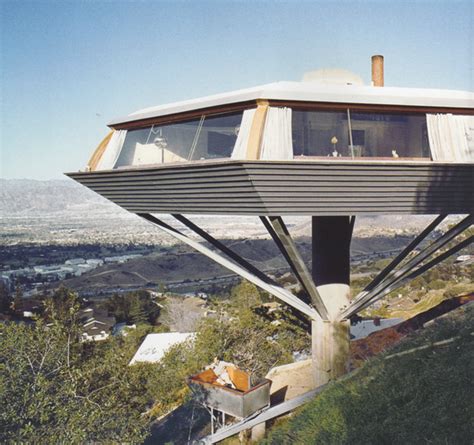
Moving inward, the package opens like a Ray Bradbury classic. IEM cable stowed below, IEM’s tucked into their form-fitting slot nicely as the arch of cable leads one down into that “cable-canyon.” Tips acting like a waterfall adorn each side, like that natural falls inside the house. Good stuff, but not ostentatious. Removing the accordion-style user manual, much like a Triptych in the house (I whole heartedly thank my wife for that fine definition, I am so lucky).

Upon arrival of anything, after exploring the box (in quick fashion, to be revisited while listening) I always check fit and finish. Mostly fit. That way I can gauge placement in my ear(s) while providing an understanding of what I may need tip-wise (duh, already discussed that). Needless to say, the Mk.2 fit very well sticking out only a bit (not like others, but not as flush either), providing me a good seal and fit. No rubbing of my concha or lobe. I then start the critter up for an initial listen to make sure all works. Hooking the Mk.2 into the M3s, it did indeed work. I thusly proceeded to ignore the Hibiki for 3 solid days, except for making sure the Shanling stayed charged.
While I do believe in the power of initial listen as somewhat of a guide, how long will that critter-in-ear stay with less than an hour of use? Or 10? Thus, my belief is in providing you dear reader with a “burned-in” model more inline of what it might sound like after you have had it for a while. As such, I listen to Los Lonely Boys (oh man…)
Nobody Else, in Spanish after about 60hrs of “use.” I can state, that
to me there has been an opening of sound, with which many would agree comes after a DD opens up due to time. Some I have don’t. Some I have do a whole heckuva lot, then others do a bit. The Hibiki would fall into that latter category. Not that much change, but noticeable and for the good.
The 2-pin cable (my personal favorite) is somewhat stiff, but flexible. With good tactility, without being tacky (I hate that), the cable wraps easily, but does tangle a bit. Made of 26AWG copper, the cable does lend a slight warmth to the sound. But, since that is my pref, I’m good with that. Touted for
daily commuters, The Hibiki lends itself well for durability of IEM and cable. A good start. One thing missing though, is a case. For almost any price, I expect a case. Even a cheap faux-cordura case, which cost $2 would be appreciated. This and another are two recent IEM’s bucking that trend by foregoing the case. While I do not really approve, I was able to find a decent case. But if you immediately want to utilize the Mk.2 for commuting, you would be wise to order a case at the same time.
Also, while the cable is nice and tactile, I often had to readjust the over ear guides to keep them in place around my glasses. A bit more weighting on the drop knob part would alleviate this. I do believe that area is too light.
Iniziale:
So, after that repertoire of breaking the Hibiki in, I was finally able to give a listen. And I will state that if most consider this an improvement upon the first iteration, then that first model must have sounded pretty darn good. The Mk.2 provided me with a decent bass reach on the Opus and Questyle, but more prevalent on the Shanling. That stands to reason as the first two are my “reference” DAPs as it stands. The M3s, my warm sounding critter.
One thing I will note while using the three above. Only with the Shanling M3s did I
not have to use an adaptor, due to the TRRS jack. Using the Opus and Questyle, I was met with only the left channel working. Thus, I had to use the iFi iMatch in the SE position to achieve sound on the #2/QP2R. I guess you could say that I am not versed enough to understand why, and in fact contacted Lillian about it. It was only when I hooked the Hibiki back to the Shanling, that I understood. So, the iMatch or amped worked fine on the other two DAPs.
Impressed so far with the sound, I proceeded for further depth.
Further Depth:
With that extended-range Titanium driver, you would expect a certain level of detail in the sound to be present. One will not be disappointed with the Hibiki Mk.2 in that regard. Each layer of instrument in
Texican Style is present and accounted for. You almost forget that until Henry’s guitar screams the solo at you from all around your gray matter, complimenting his vocals while Jojo and Ringo happily come along. Man, what a group. A nice surprise, indeed.
Bass while on the light side, is impactful and reaches fairly deep (tip dependent) with decently fast decay so as not to impede the guitar licks of whatever your pleasure. When needed, the bass shows itself, but is never bossy in nature. I appreciate this bass quality but wish for more quantity. Certainly not bass-shy as some IEM’s can be, the want for more is there for me. Again, this is good bass quality, but more of it would have heightened my appreciation for the 10mm dynamic driver.
The
mids are the highlight to me. Full, rich and layered, the tie between the treble on one end and the aforementioned bass down low are held by that mid quality. Not forward, not shouting LOOK AT ME, the mids present very good male vocals, while the guitar licks slip into that same vein.
Outlaws show this well. Guitar support equal Willy Nelson’s guest voice, as Jojo hammers away on harmonica. This is downhome goodness of mid, finished by Henry’s solo at the end.
While the
treble may not take center stage, which is fine in my book; that upper reach of guitar and music is detailed enough to allow the finer points to show. This is not treble-shy by any means, it is treble well-done in my book. Thorough reach, without sibilance and brittleness allow me to enjoy that sound. This is amongst the better treble sound of any recent memory, and almost matches the Simgot EM5 in my opinion; which has exceptional treble quality in my book. When one considers the price difference, this is a very good accomplishment.
Cymbal clash and drum stick rimshot are present, placed well and detailed. Supporting the bass well, it is here where the sound becomes evident that there is a slight V-shape. Not much (to me), but noticeable. Again, not bad, as sometimes I prefer a V-shaped sound. Nothing sibilant here, move along.
Other:
There is a slight out of ear experience with
sound stage here, but to me the height of sound highlights the presentation, almost like looking up into a majestic cathedral. I do believe this comes at the expense of depth, as to me this seems a bit shallow fore/aft. Not a bad presentation, overall. Not intimate small club. Not large stadium sound. Just about right for the sound presented.
And with that sound, comes reasonable
layering and
instrument separation. While the instruments can be clearly heard, there is a bit of discourse as to where those actually reside. Not anything disconcerting mind you, but simply not as accurate as some I have heard lately. This seems to play into the motto of
daily commuter of which Shozy espouses. In a noisy situation, this frontal-ness of sound is a benefit in those loud situations. And this certainly isn’t a noisy muddled mess of commuter sound. Just one companies version of commuting bliss.
That said, when
(Da Le) Yaleo comes on, Carlos guitar keeps things nice and sharp. Separated nicely, this shows the versatility of the Hibiki. Able to be almost intimate as needed, and almost airy when needed, the Mk.2 is versatile.
Comparos dujure:
As previously mentioned, I had issues when using the Hibiki through the Opus and Questyle without help. But, once I hooked the
iBasso PB3 to the
Opus #2, I quickly found a very good match. The faults listed above, seemed to all but vanish as the quality of the Opus was allowed a compliment with the iBasso. This was an excellent match indeed. You might certainly say (with good reason) that it was overkill utilizing such lofty equipment with the Hibiki, but to me this showed the true versatility of the Mk.2. Able to scale well with much more expensive equipment (albeit with trial and error) the Hibiki started to show its true worth. One would certainly be able to take the PB3/#2 as a commuting pair. And here the Mk.2 would happily accompany.
As a stand-alone though, the
Shanling M3s provided the best inexpensive sound. I mentioned on an Instagram post how for sub-$300 you could have a very good commuting set. And this is where many will look. Not wanting to take their home-based gear, the pair would be a fine set for kicking around the city. Slightly darker of tone than the set mentioned directly above, the bass is not as sharp, detailed or deep. But with everything there is a cost, and that cost is a density of warmness, which could thaw a glacier in mid-winter. I expound “a bit” of course, but the cliché is not lost, once you hear the pair. I have many that would pair nicely with the Shanling on a to-go set up, and I would concede that I now must add the Hibiki to that list.
Last (and shortest) the
Questyle QP2R aided in the quality sound of the Mk.2. It is now my reference DAP, replacing the already excellent #2, but it is worth that placement as I now yield to that decision. Clarity of sound would define this pair, losing that bass touch, which the other pairings present. But with that clarity comes an open airiness to the instrumentation, which brings out the best in the Hibiki. Not one to pass this up, I hook the pair up together to verify.
Rose from Los Lonely Boys verifies that crisp sound. The Hibiki sounds very good here.
Moving on to other IEM’s, I had to think about what a good fit might be against the Hibiki. I have some very good quality additions, as well as some older standbys with which to choose.
Costing twice the price, the
Kinera iDun has beauty oozing from the cable and wood face. It really is quite exquisite at which to look. Easier to drive than the Hibiki, it has deeper reach of bass, as well as better control. There is definitely more up top as well. The sound stage is not as tall, but deeper. Width about the same, with the edge going to the Hibiki in my opinion. So, what does the Hibiki have, which would place it above the iDun? Portability comes to mind, first. I would be loath to use the iDun for commuting. Not because it may not be up to the task, but because it looks so darn good, and that wonderful cable is not only shorter, but does not have a mic. Add in that the cable may tend to stick or catch on something and that is a chance with which I am not willing to gamble.
Moving on to the
Advanced Sound Group GT3, this may seem an even less likely comparison. But I posit that the GT3 is made for commuting, what with its bullet shape and ease of use. The only thing lacking is a mic cable, which can be easily changed with the MMCX cable. With a more forward sound, I mentioned in my review that while forward, the mids still do not shout at you. The Hibiki owns the bass quantity on the GT3 as well. Quality though, goes to the higher priced critter. Among the higher quality I have heard recently, it is a bit shy for my taste. Needless to say, that the Hibiki/GT3 would be a good companion pair, something I have embraced often lately. One cannot have too many IEM’s after all. As much as I like the Hibiki mids, I prefer the GT3 a smidge more. Both are good, but the GT3 a bit better.
Matching the price, and definitely in the same range would be the
TinAudio T2. Matching capabilities very well, I called the T2 “quite pleasant in which to listen.” And, “With mids supporting each end, the bass almost matches what I like.” I found the T2 a good bargain at the $50 price point, and I still feel that way. With easy fit, the sound is not offending in any manner. I feel the same with the Hibiki. What sets the Hibiki ahead, is a more durable cable and better fit. The T2 is made of metal, and while good, fits more into the earbud realm, as it wears well with the cable down. Something I do not really care for, but only an option as you can just as easily wear them over-ear. Both have good presence, but I would find for the durability of the Hibiki here.
What’s left?!
So, we reach an end (hopefully you stayed with this…). An end that may be a beginning for some (in their search for higher quality in-ears, and this would be present here). An end, which may result in an end (as in I’m done! I’ve found what I am looking for!). Others may have the desire to add to their collection. All of the mentioned apply here and would be worthy of mention. For in the AAW-Shozy Hibiki Mk.2, you have a very capable IEM, which would come along quite happily on your daily commute, or a romp around town. A plus would be you need not worry about durability as the cable while thinner than others is plenty strong and capable of taking abuse. A bonus is its use as a remote and mobile addition. Call quality is very good (really, what cable isn’t in this day…), with little wind noise and a well-placed unit. The Hibiki is more than capable on your daily travails and weekend excursions. The Hibiki Mk.2 should get a look from you in you are in the market for a lower end mid-fi with multiple capabilities.
I want to thank Lillian from Linsoul Sound for providing the review unit. I very much enjoy the Hibiki and hope you all give it a listen. It just may be an addition to your stable.

